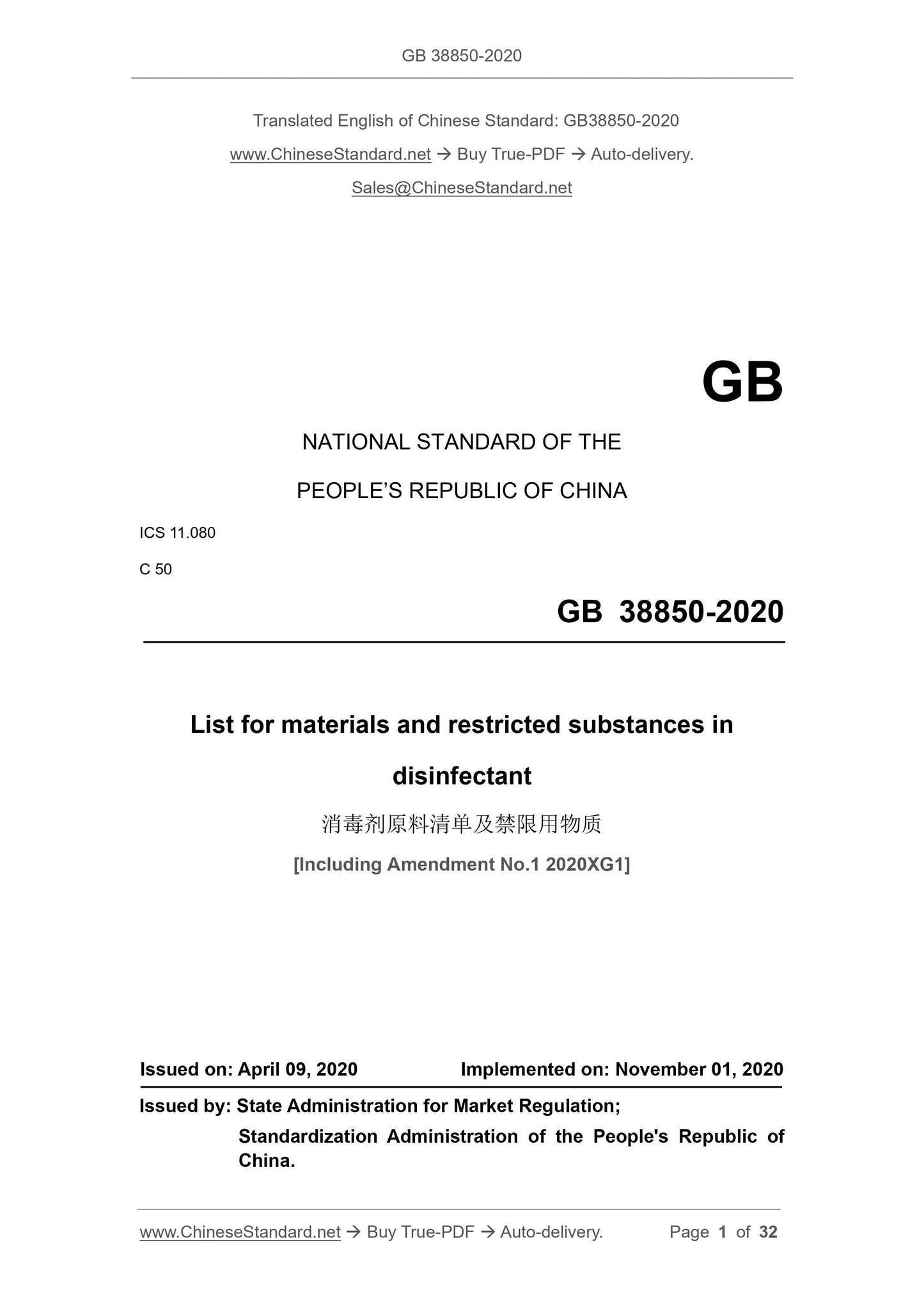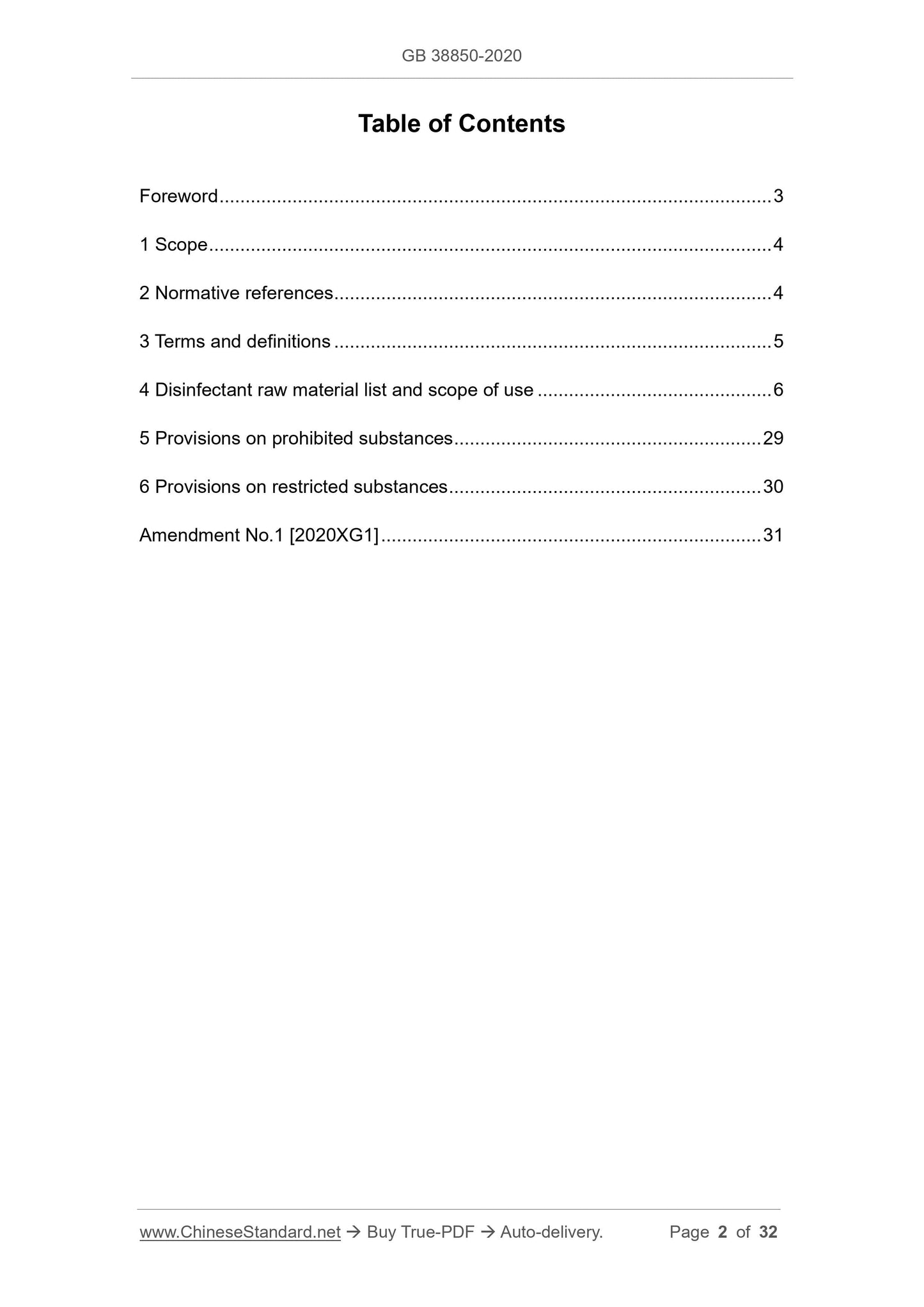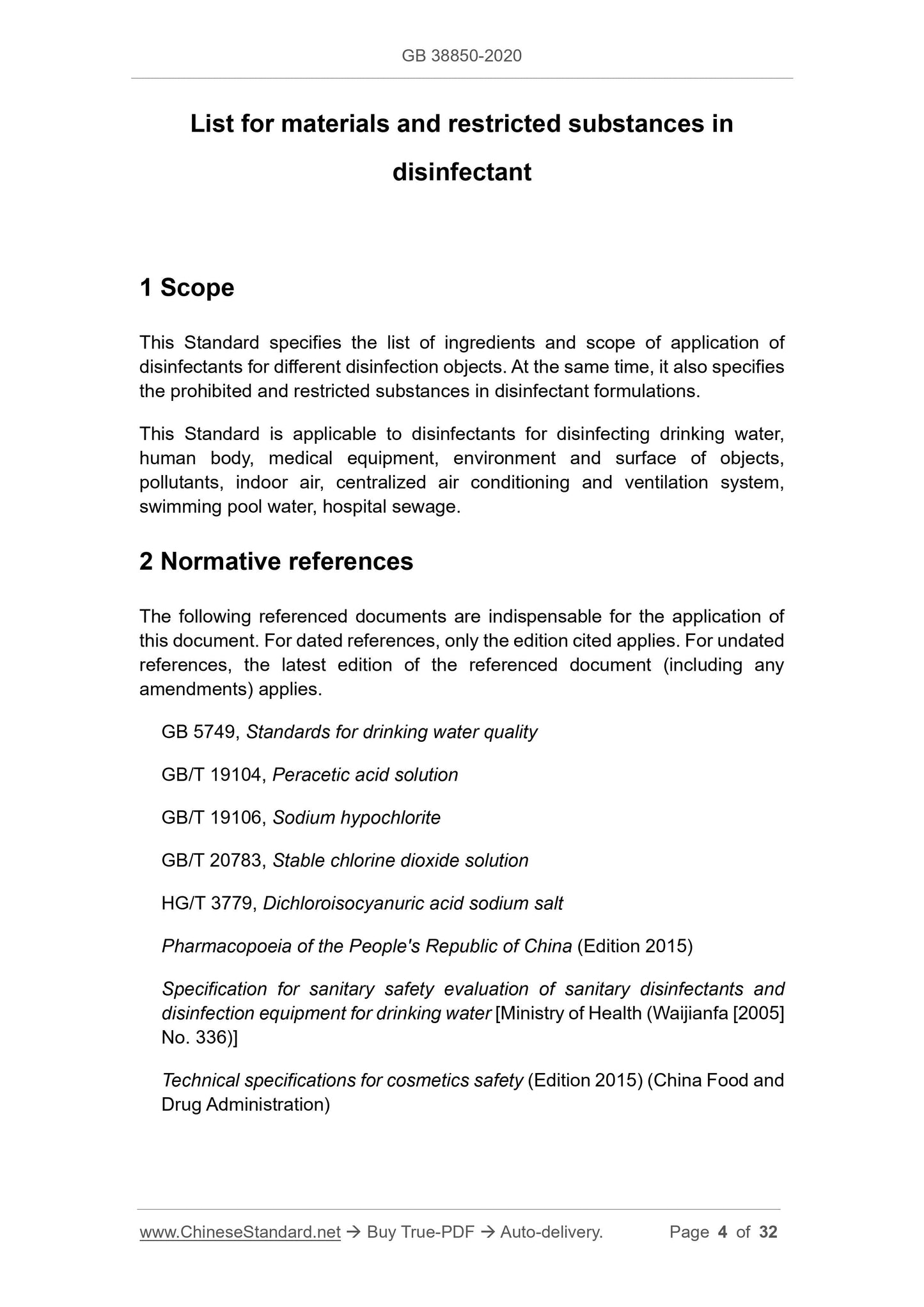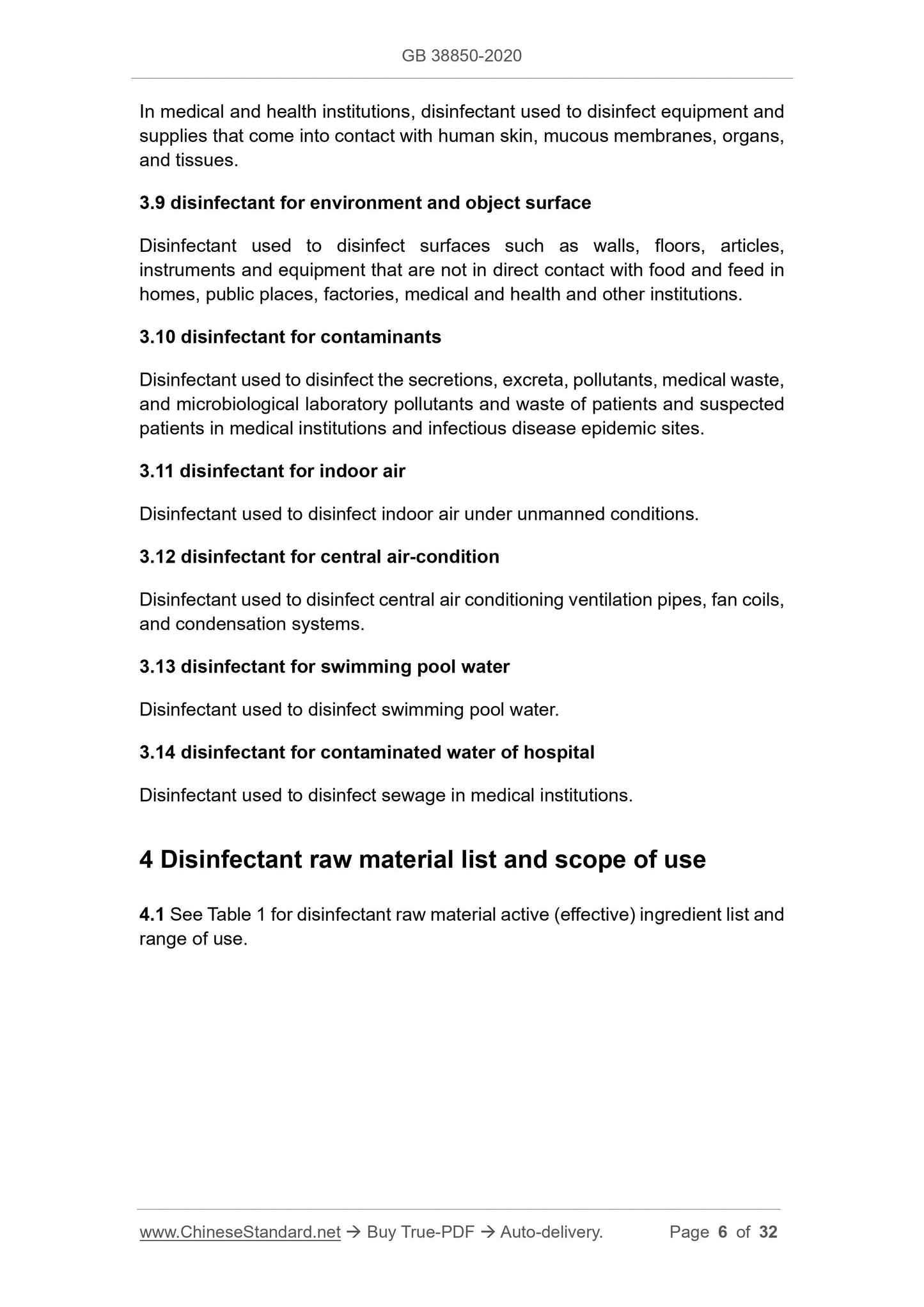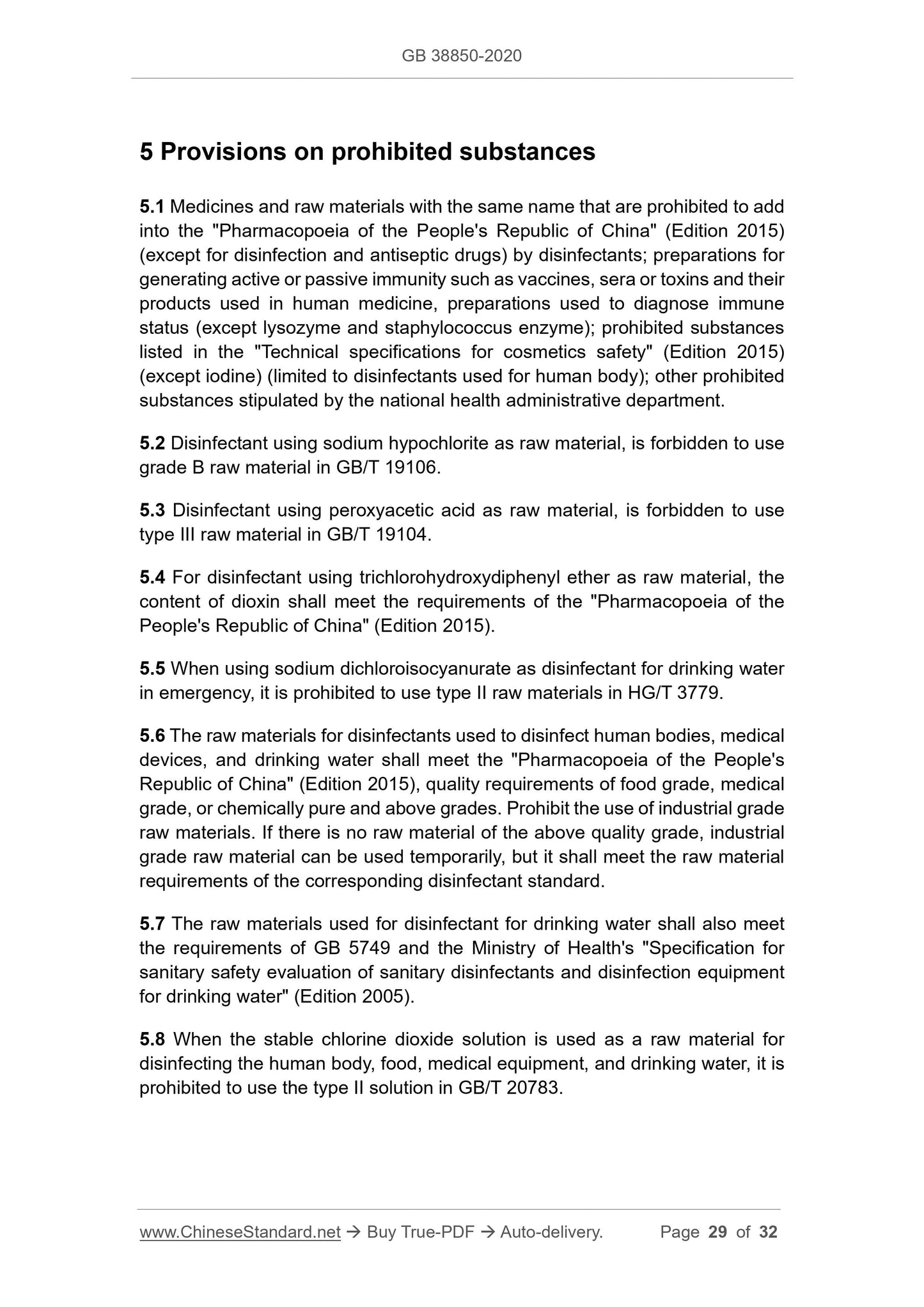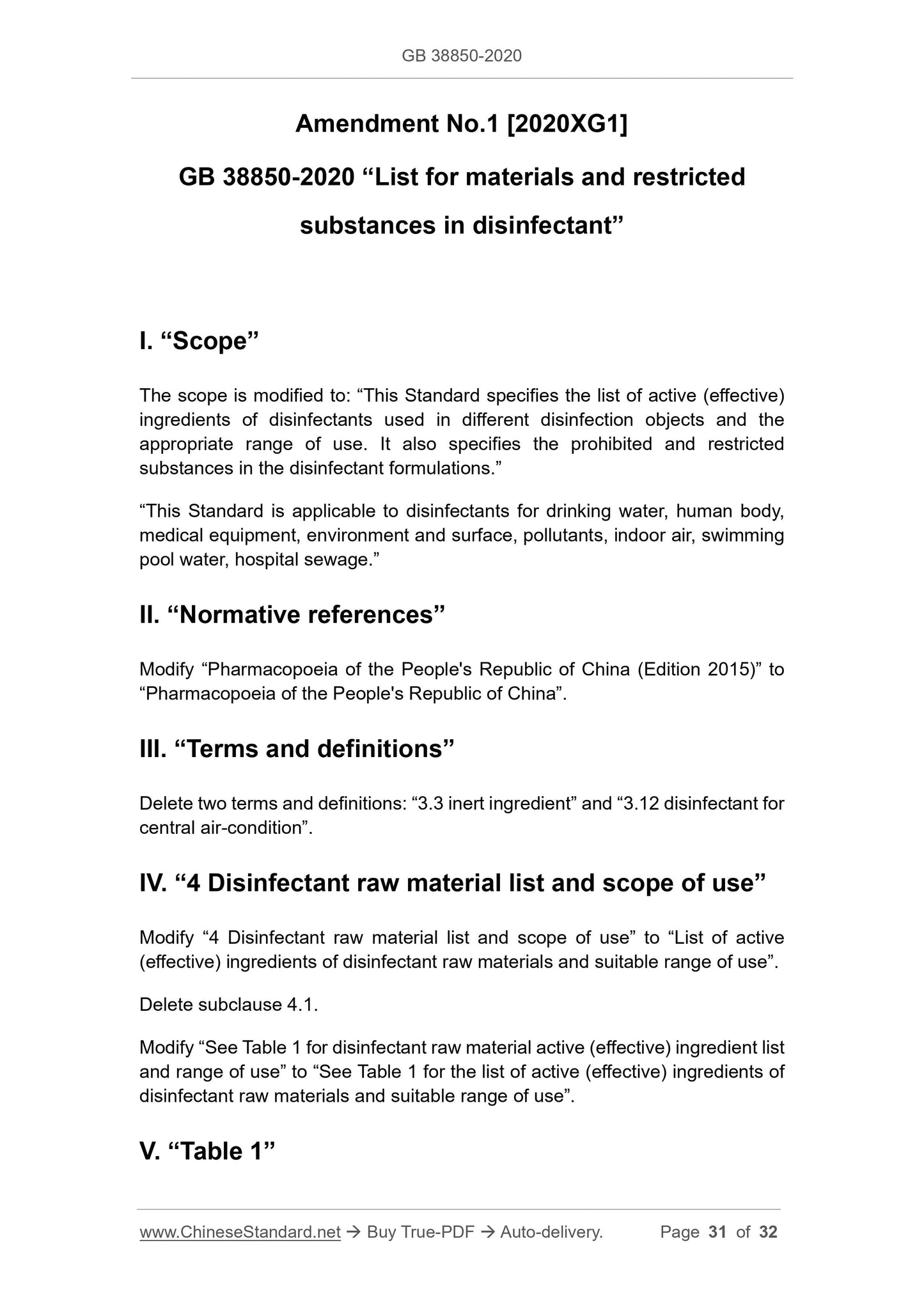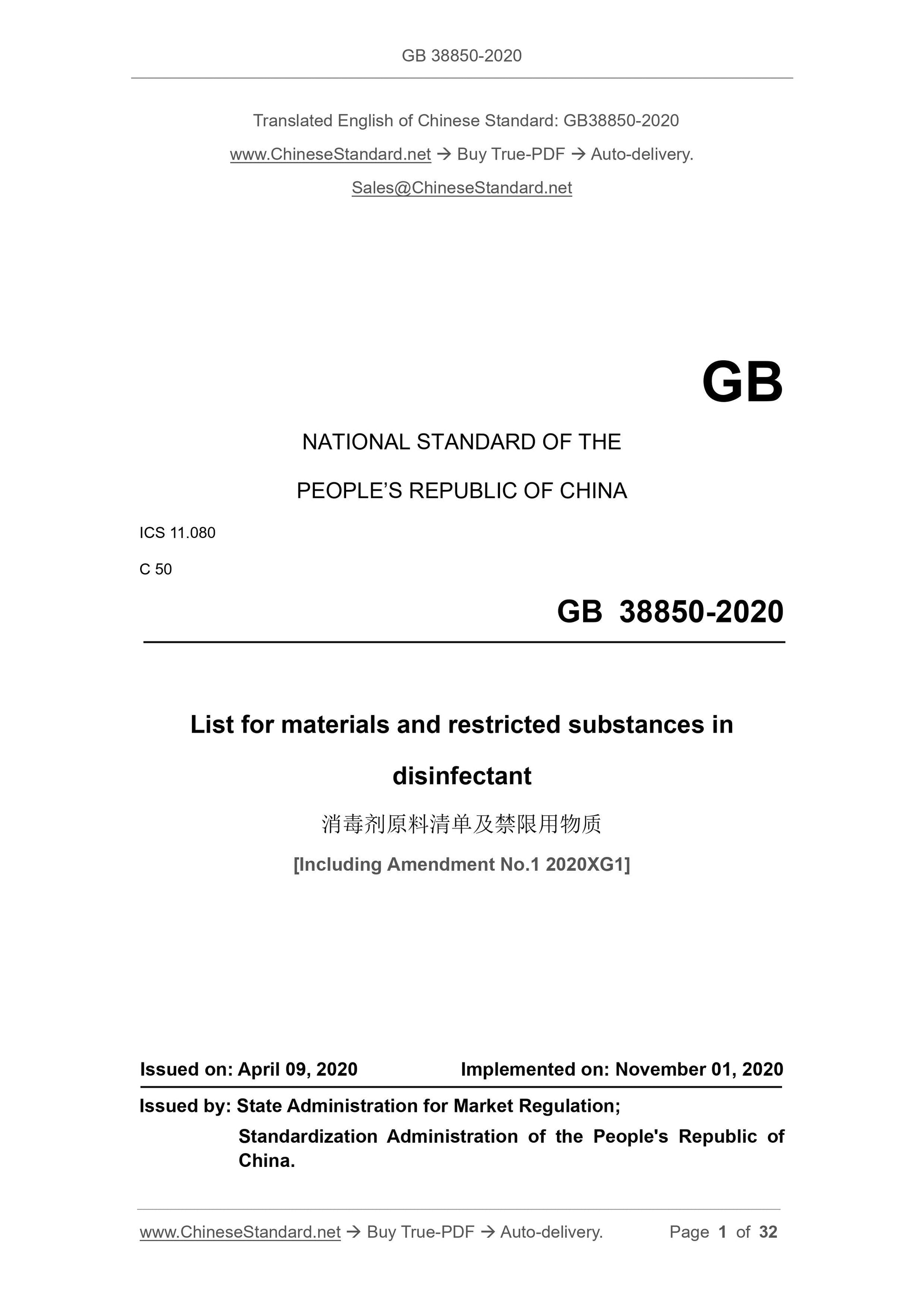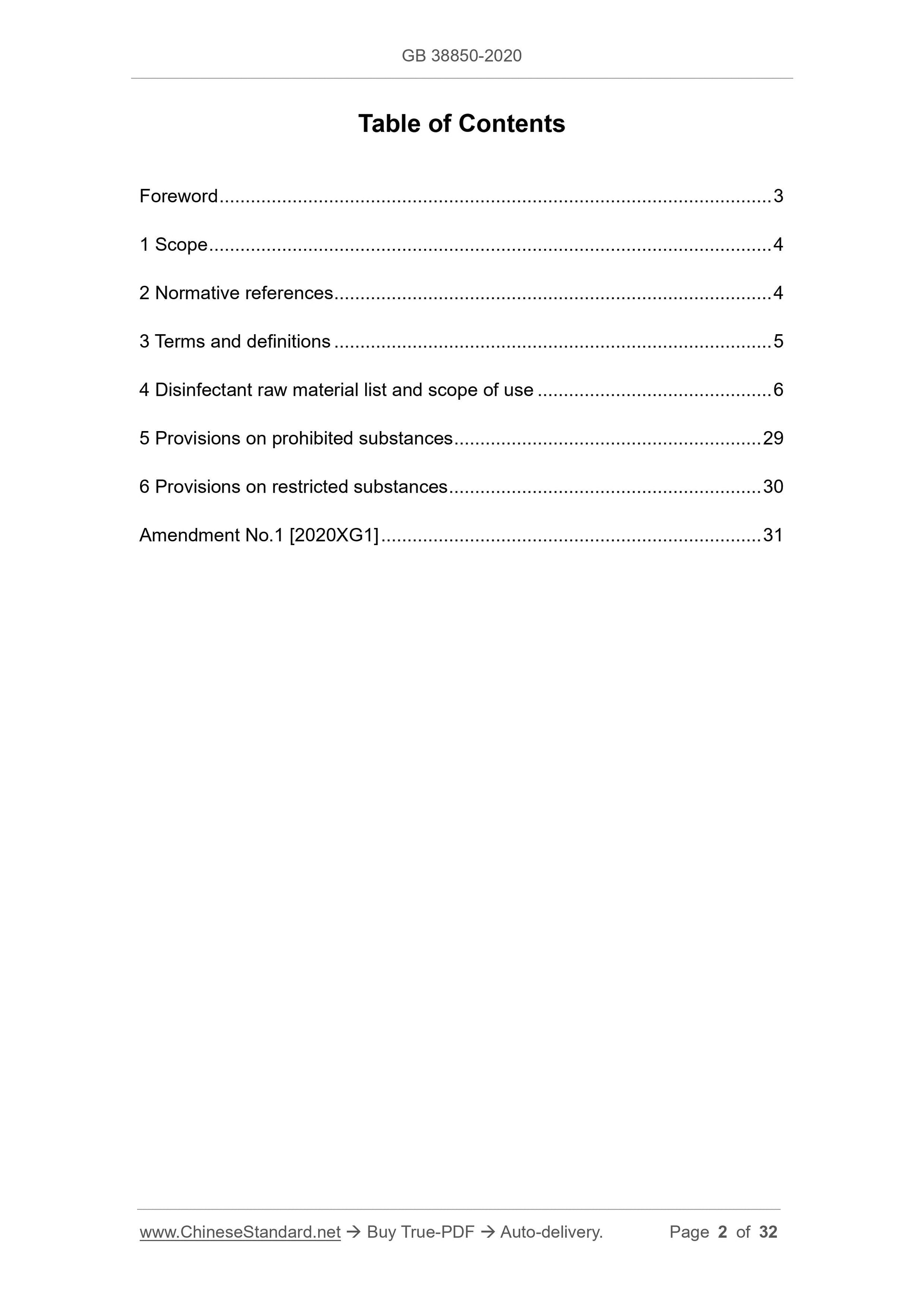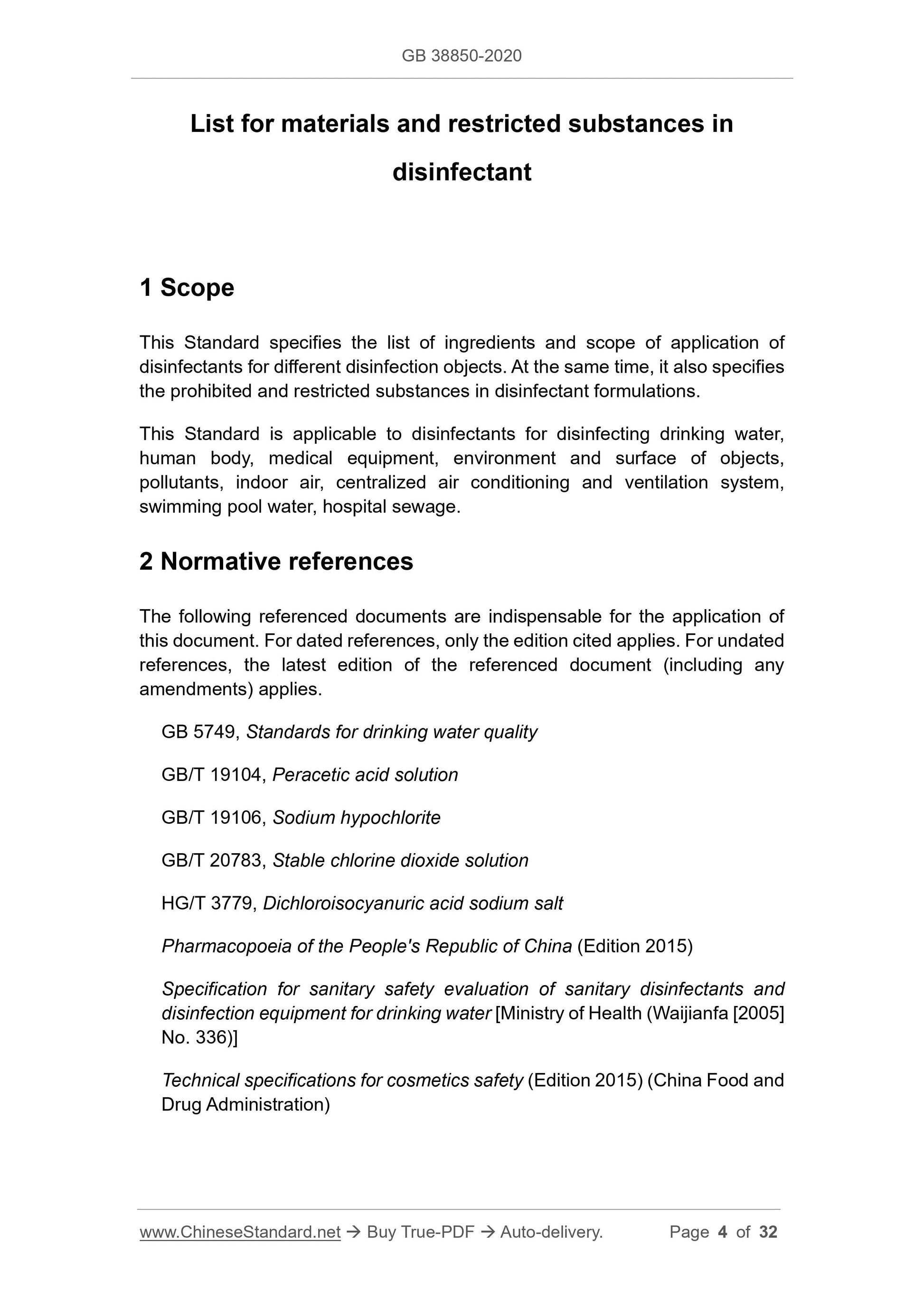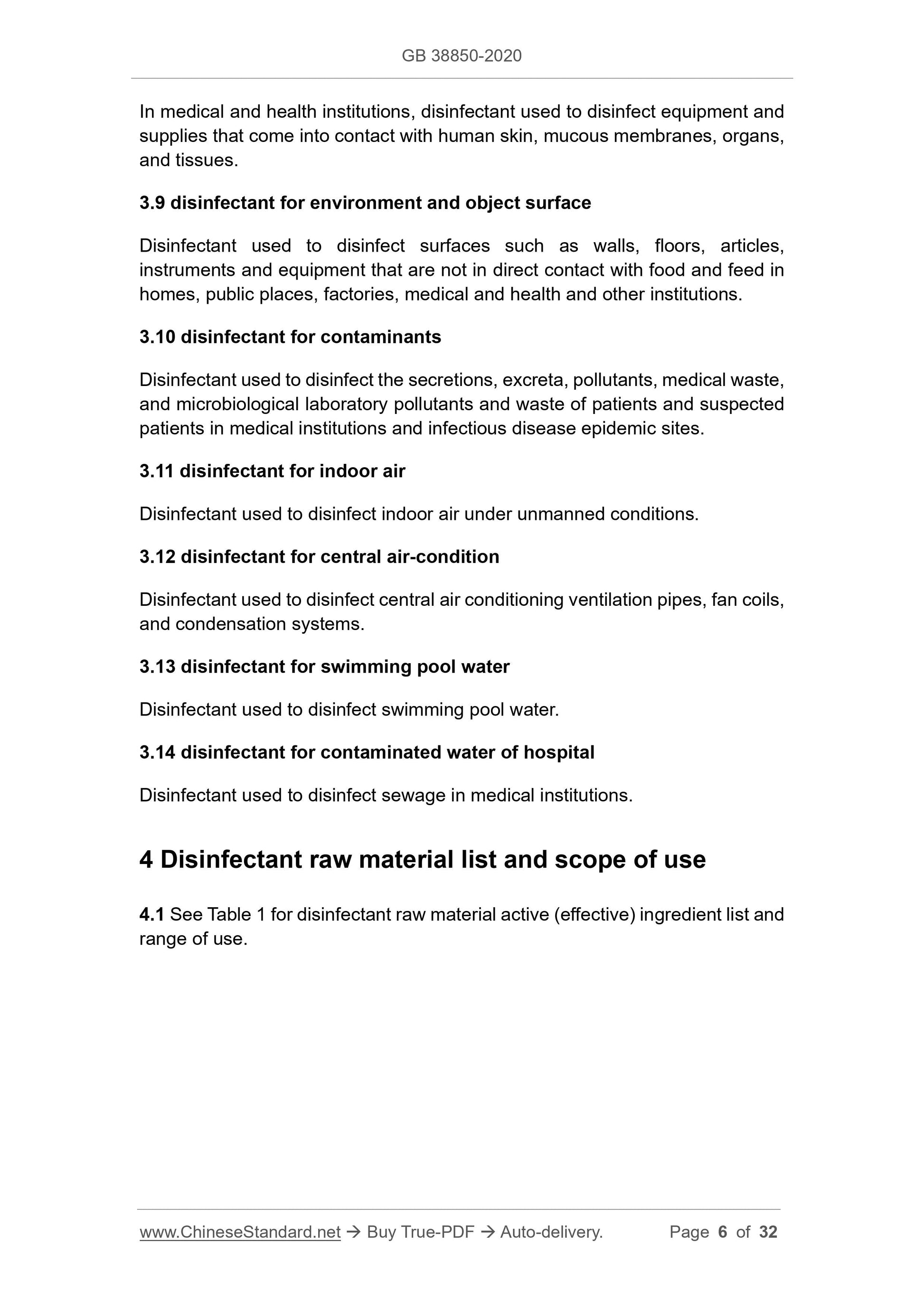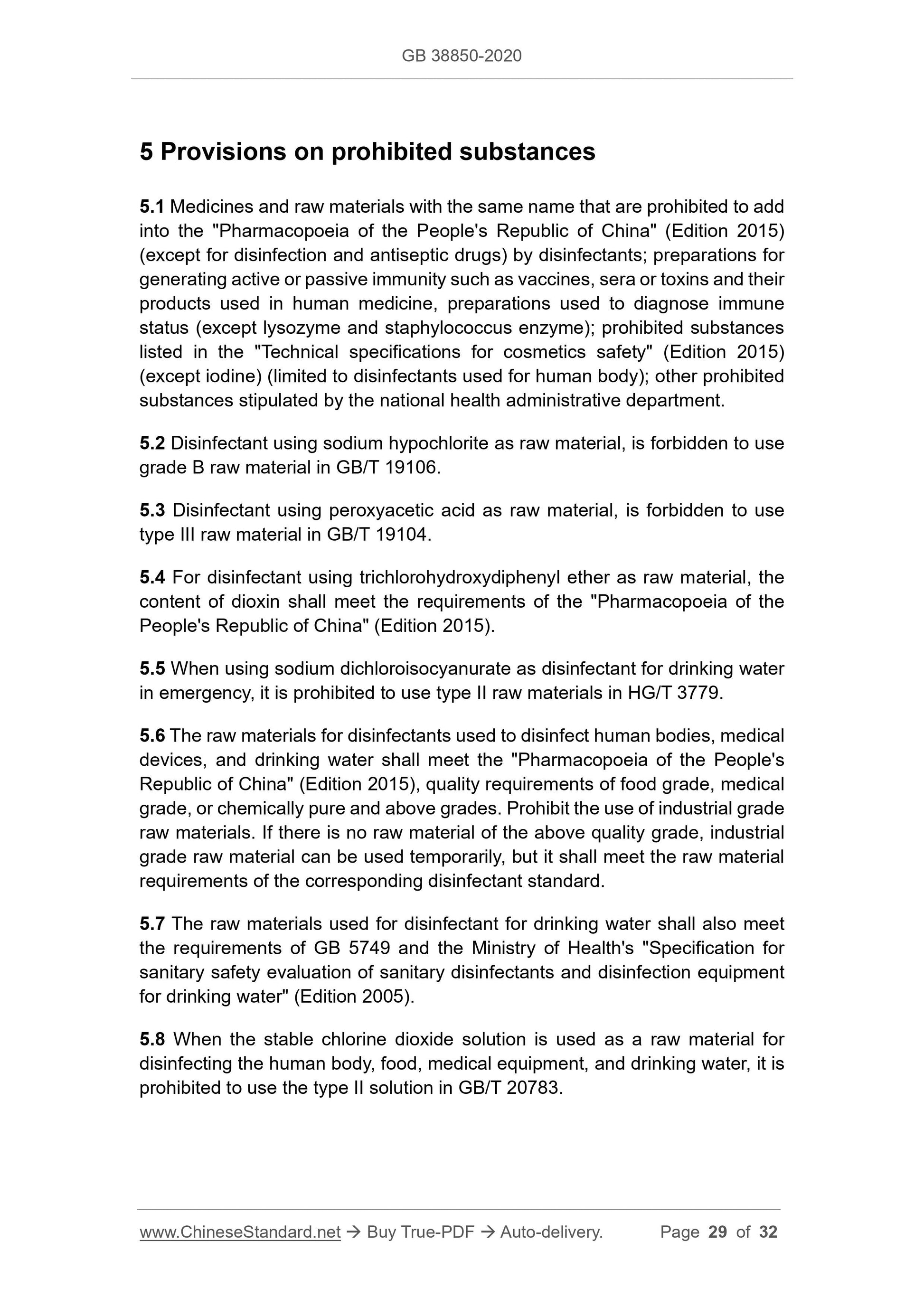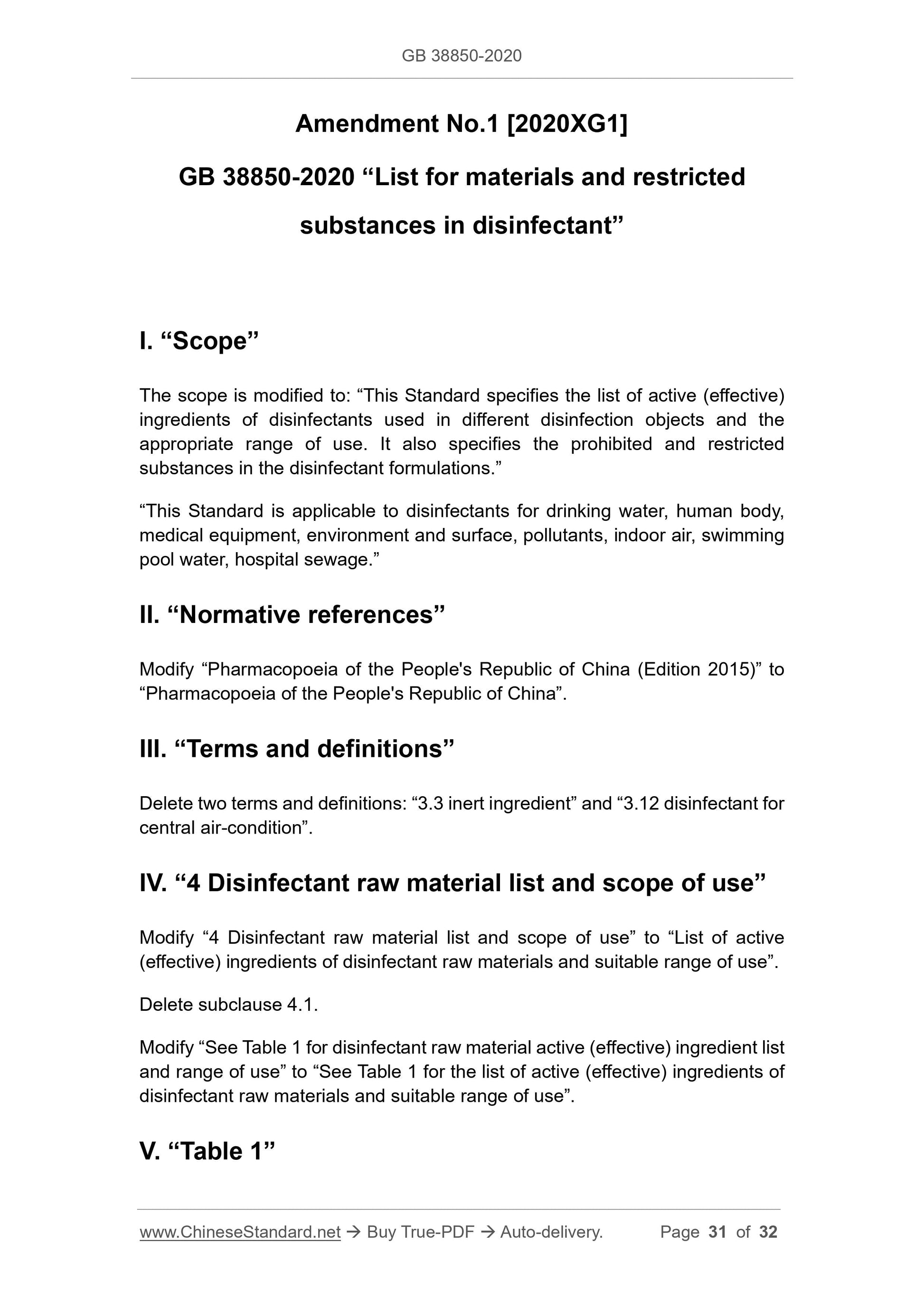1
/
of
6
www.ChineseStandard.us -- Field Test Asia Pte. Ltd.
GB 38850-2020 English PDF
GB 38850-2020 English PDF
Regular price
$150.00
Regular price
Sale price
$150.00
Unit price
/
per
Shipping calculated at checkout.
Couldn't load pickup availability
GB 38850-2020: List for materials and restricted substances in disinfectant
Delivery: 9 seconds. Download (and Email) true-PDF + Invoice.Get Quotation: Click GB 38850-2020 (Self-service in 1-minute)
Newer / historical versions: GB 38850-2020
Preview True-PDF
Scope
This Standard specifies the list of ingredients and scope of application ofdisinfectants for different disinfection objects. At the same time, it also specifies
the prohibited and restricted substances in disinfectant formulations.
This Standard is applicable to disinfectants for disinfecting drinking water,
human body, medical equipment, environment and surface of objects,
pollutants, indoor air, centralized air conditioning and ventilation system,
swimming pool water, hospital sewage.
Basic Data
| Standard ID | GB 38850-2020 (GB38850-2020) |
| Description (Translated English) | List for materials and restricted substances in disinfectant |
| Sector / Industry | National Standard |
| Classification of Chinese Standard | C50 |
| Classification of International Standard | 11.080 |
| Word Count Estimation | 14,188 |
| Date of Issue | 2020-04-09 |
| Date of Implementation | 2020-11-01 |
| Issuing agency(ies) | State Administration for Market Regulation, China National Standardization Administration |
Share
